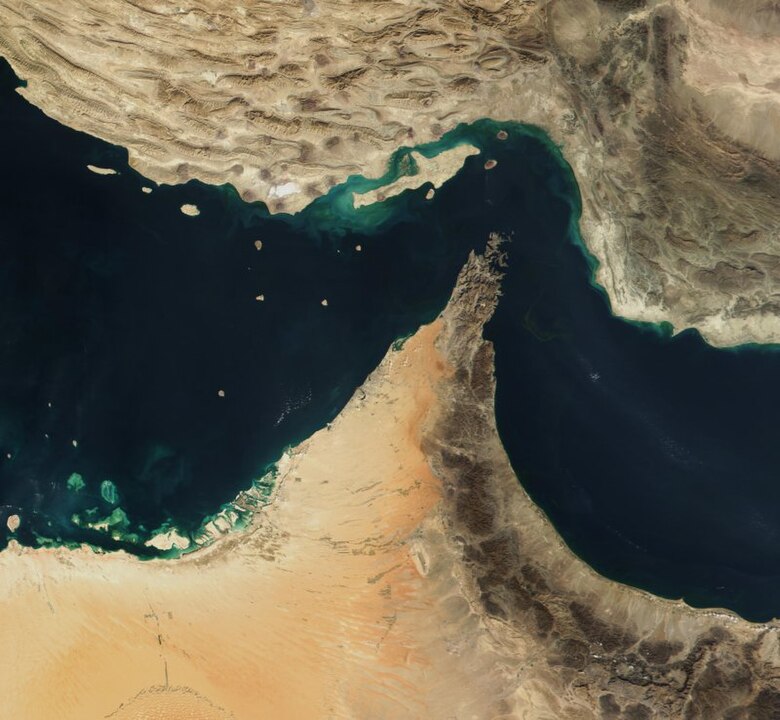Recent news about the United States preparing to deploy Marines and Navy personnel aboard commercial tankers transiting the Gulf comes as part of efforts to deter Iran from seizing ships in the region.
The move aims to provide an additional layer of protection to tankers, which transport around a fifth of the world’s oil through the strategically vital Strait of Hormuz.
The escalating tensions between the U.S. and Iran have brought the Gulf region to the brink of crisis, impacting maritime trade and posing a risk of military confrontations. In this article, we will delve into the background of the conflict that led to this situation and explore the current standing of the crisis.
Strait of Hormuz: A Vital Maritime Chokepoint
The Persian Gulf has been a focal point of friction between the United States and Iran for several decades. In 1987, during the Iran-Iraq war, the U.S. launched Operation Earnest Will to protect U.S.-allied vessels in the area. The situation escalated further in April 1988 when U.S. forces engaged in Operation Praying Mantis, which resulted in the sinking or severe damage of half of Iran’s operational fleet.

The Strait of Hormuz, a critical chokepoint in the maritime world, witnesses approximately 30 percent of the world’s seaborne-traded crude oil passing through it daily. This narrow channel that connects the Persian Gulf to the Gulf of Oman, effectively separating Iran from the Arabian Peninsula, falls mainly under the purview of the Iranian Revolutionary Guard Corps’ navy, which has repeatedly threatened to block the strait in response to foreign pressure. U.S. presence in the region and perceived provocative actions by both U.S. and Iranian naval forces have contributed to tense encounters at sea.
The U.S. withdrawal from the Iran nuclear deal in 2018 and the subsequent reimposition of sanctions intensified the friction between the two countries. This led to a series of incidents involving damage, harassment, and seizure of oil tankers in the Gulf, raising the risk of unintended military confrontations.
The Recent Crisis in the Strait of Hormuz
The recent crisis in the Strait of Hormuz further escalated tensions between the U.S. and Iran. The U.S. has been increasing its military presence in the region in response to Iran’s provocative actions. Last month, the U.S. announced plans to deploy a destroyer, F-35, and F-16 warplanes, along with an Amphibious Readiness Group/Marine Expeditionary Unit consisting of around 3,000 personnel.
Senior U.S. Defense Officials have stated that preparations are underway to soon begin the Deployment of Marines and Sailors onto Commercial Shipping Vessels as they a pass through the Gulf of Oman and the Persian Gulf through the Strait of Hormuz in order to Protect them from… pic.twitter.com/9G4Yc24d9Y
— OSINTdefender (@sentdefender) August 3, 2023
Advertisement
Iran has been accused of seizing or attempting to take control of nearly 20 internationally flagged ships in the region over the past two years. The U.S. military foiled two attempts by Iran to seize commercial tankers in international waters off Oman on July 5, while Iran took control of a commercial ship the following day. Such incidents highlight the volatility of the situation and the potential risks posed to international shipping in the region.
U.S. Response to the Crisis
In response to the growing threats, the U.S. has undertaken Operation Sentinel to increase surveillance and security in critical waterways, including the Strait of Hormuz. European states have also deployed vessels to the Gulf to monitor and de-escalate tensions.
⚠️🇺🇸⚔️🇮🇷 – #BREAKING – #USNavy says it prevented #Iran from seizing tankers in #GulfofOman. pic.twitter.com/oMvlcatR39
— 🔥🗞The Informant (@theinformant_x) July 5, 2023
The recent decision by the United States to deploy Marines and Navy personnel aboard commercial tankers transiting the Gulf is a response to the ongoing challenges faced in securing the region’s vital waterways. This move aims to provide an added layer of defense for vulnerable ships in addition to the presence of warships and planes operating in the area.
Potential Consequences and Way Forward
While U.S. officials assert that the deployment aims to deter Iran from any hostile actions, there are concerns about the possibility of unintended confrontations between U.S. and Iranian forces. The situation remains delicate, and any accidental escalation could have severe repercussions on regional stability and global energy markets.
It is essential for all parties involved to exercise restraint and adhere to international law to prevent any accidental clashes. Diplomatic channels should remain open to resolve disputes and address the underlying issues that have heightened regional tensions.
Efforts to promote dialogue and de-escalation between the U.S. and Iran are crucial to avoiding a full-blown crisis in the Strait of Hormuz. Regional and international stakeholders should work together to find peaceful solutions that safeguard maritime trade and maintain stability in the Gulf.
Amping Up Security Forces in the Gulf
The deployment of Marines and Navy personnel aboard commercial tankers in the Gulf is a significant development in the ongoing crisis between the United States and Iran. The situation in the Strait of Hormuz remains tense, and the potential for accidental escalation is a cause for concern. All parties must act responsibly, adhere to international law, and engage in diplomatic efforts to defuse tensions and ensure the security of vital waterways for international trade.
As the world watches developments in the Gulf, diplomatic solutions and multilateral efforts must take center stage to prevent a full-blown conflict and protect the interests of all nations involved. A cooperative approach and commitment to peaceful resolution will be essential in navigating the complexities of this crisis and avoiding any adverse impact on global energy markets and regional stability.










COMMENTS
You must become a subscriber or login to view or post comments on this article.